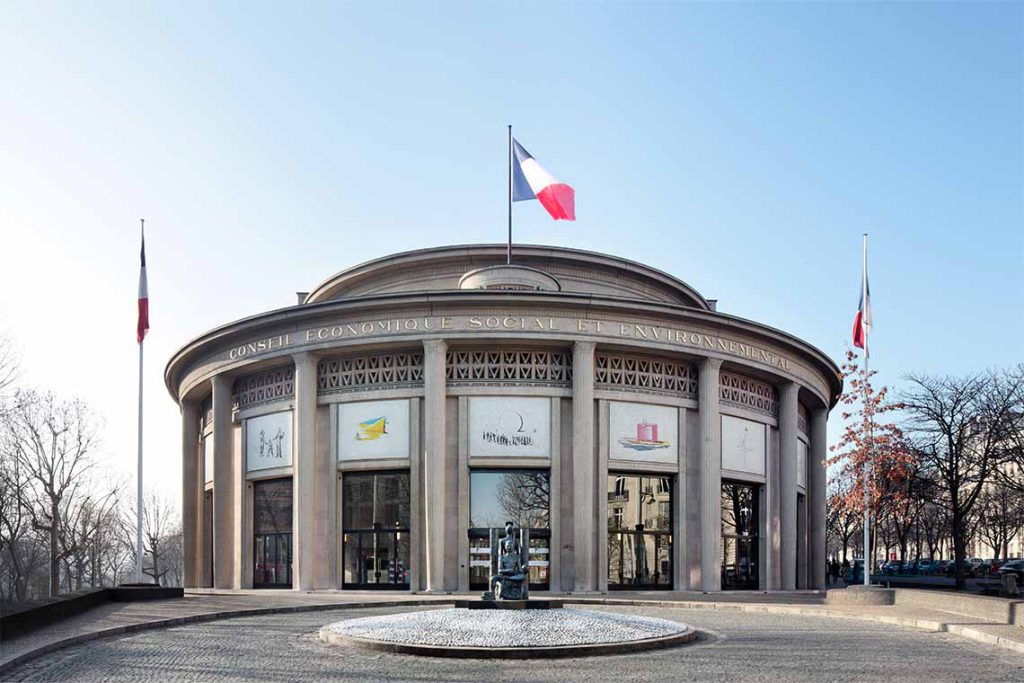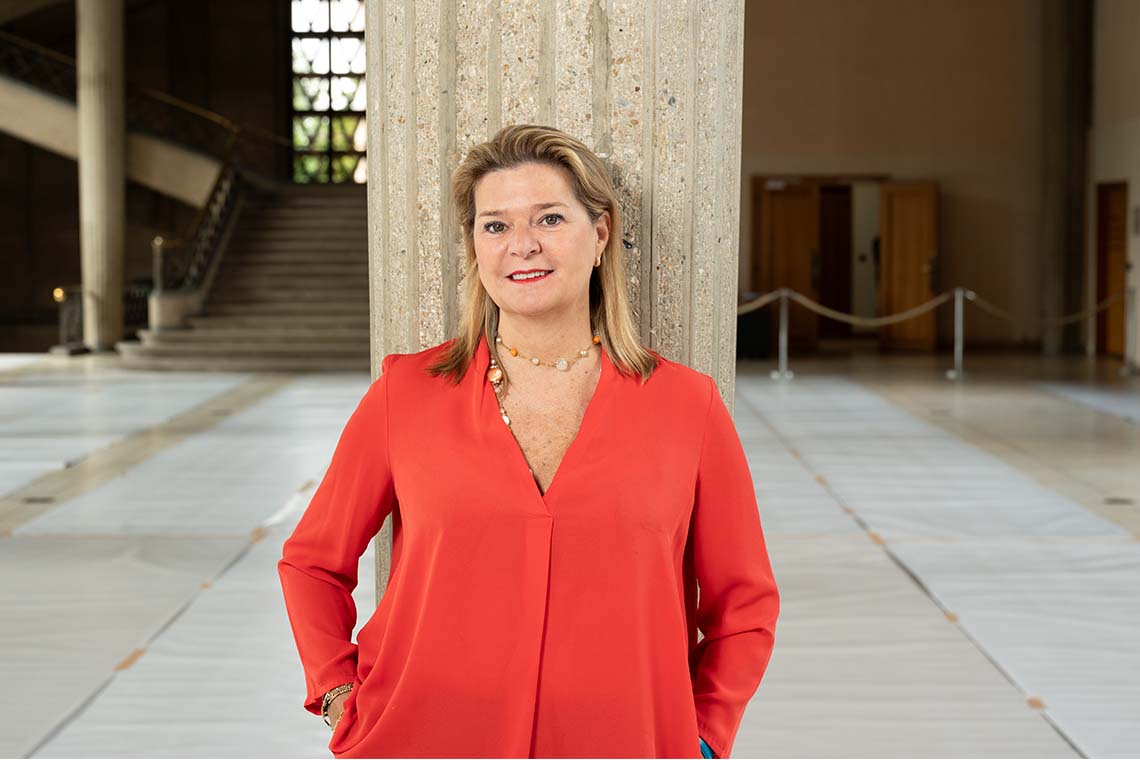Founder and Fair Director of MENART, Laure d’Hauteville, speaks to Ali Y Khadra about the recent fourth edition in Paris (15 – 17 September 2023) and the fair’s wider impact across Europe.
Ali Y Khadra: What prompted the creation of MENART, and what is the importance of having a MENA-focused art fair in Europe?
Laure d’Hauteville: I lived in the Middle East for more than 30 years, during which time I created the BEIRUT ART FAIR and launched the first edition of the art fair in Abu Dhabi called ArtParis Abu Dhabi.
It has become increasingly evident that there are already fairs dedicated to Africa or Asia, but little focus on the Middle East. Museums and foundations in Europe are starting to take an interest in our region, so it’s crucial to offer our artists visibility in Europe. It was therefore important to create a fair dedicated to the MENA region, and given my experience and knowledge of art from these geographies, I decided to set up a boutique art fair in Europe dedicated to galleries which present artists from Middle East, North Africa and Iran.
Every year we host two editions of the MENART Fair, one in Paris, the capital of art in Europe, in September and the other takes place in Brussels, the collector capital of Europe, in February.
How has the fair evolved since its initial launch?
More and more visitors and collectors are getting involved with MENART Fair each year. Museums and institutions want to know more about the art coming from our part of the world, and auction houses have holding dedicated sales. The market in Europe is really strengthening and MENART Fair is playing a key role in this direction. We are in the process of opening the doors to MENA art and giving visitors the keys to understanding more about it.
Since the fair’s inauguration in 2021, have you seen a difference in how the public reacts to art from the Levant, the Gulf and North Africa?
Interest is definitely growing and European audiences are keen to see more. MENART Fair provides wonderful visibility for the region’s artists and it’s important to make them known in Paris and beyond!
What are the demographics of the visitors and collectors?
Generally, I’d say that they are people who are used to travelling and discovering new artists. They are looking for new things, and want to discover emerging artists and rising stars. They also want to understand the art of the Middle East in relation to the history of these countries, which is of course a little complicated. That’s why we organise mediations during the fair to explain the art and context of the MENA countries. We also arrange conferences and round tables, both at the fair and across various venues throughout the year. For example, before the Paris opening we were invited by the Tokyo Art Club (Palais de Tokyo) to make a presentation to collectors about our artists and galleries, and the foundations and institutions that follow us.
How does MENART go beyond the commercial aspect of an art fair?
For the first time this year, MENART Fair also welcomed exceptional works from six art foundations and international institutions: Farjam Foundation (Dubai), Afkhami Foundation (Dubai), iii museum (Zurich), Le Cercle de l’Art (Paris), Le Consulat Voltaire (Paris) and the Montresso Art Foundation (Marrakech). In addition to our talks and conferences, the Sorbonne University in Paris has invited me to lecture on the history of MENA art for Master II students.
I have also started giving lectures about MENA art at the Sorbonne University to Master II students, thanks to Vice Dean, Rose-Marie Ferré. I think it’s important for MENA art to become more prominent in courses taught across art universities in Europe.

You also collaborate off-site with institutions. How important is this to the mission of MENART?
We are, above all, an educational fair. It’s rare to see institutions presenting a selection of their collections at fairs, so this year we invited more than 25 French museums to come and discover our galleries and artists. They came in groups comprising curators and collectors. We also organised meetings with European galleries so that they could consider adding MENA artists to their programming.
How does the fair branch out and share art from the MENA region with neighbouring countries?
We are currently developing MENART Fair branches in other European capitals, such as Brussels. Several museums there are opening MENA Art departments. There is a craze for MENA art at the moment!
How did this year’s edition resonate with its new location at the Palais d’Iéna?
Holding MENART Fair at the Palais d’Iéna was a strategic decision. First of all, the Palais d’Iéna is the headquarters of the Economic, Social and Environmental Council. It is also located in the heart of La Colline des Arts (the Hill of Art), where many art institutions are situated. We have recently entered into partnerships with several museums, and placed some of our artists there during the fair. For example, the Lebanese artist and ceramist Samar Mogarbel exhibited four of her ceramics at the Musée de l’Homme, in partnership with the Department of Seine-Maritime in Normandy. More than 50,000 people came to admire her works. We also partnered with the Palais de Chaillot and some of our artists presented works there. Our goal is to place our artists wherever we can, to expand visibility and awareness.
What support do you offer emerging galleries from the region?
We are still a young fair, but to give new galleries a chance we offer small affordable stands. We also invite young collectors to come and discover emerging artists. It worked very well this year and we want to continuing developing this area.
Were you pleased with this year’s Paris edition?
Absolutely! The opening evening was inaugurated by Thierry Beaudet, President of the CESE France and his Lebanese colleague, Charles Arbid, President of the CESE Lebanon, and held in the presence of a large number of ambassadors from MENA countries, who came to support the artists from their countries. Nearly 1200 collectors and other guests flocked to the Palais d’Iéna to see the works presented by the 31 galleries and six foundations and institutions from 14 countries. Over the three-and-a-half days of the fair we welcomed a total of 5727 visitors and there were 128 works sold, out of roughly 230 exhibited. I was delighted with the response and feedback was excellent.



